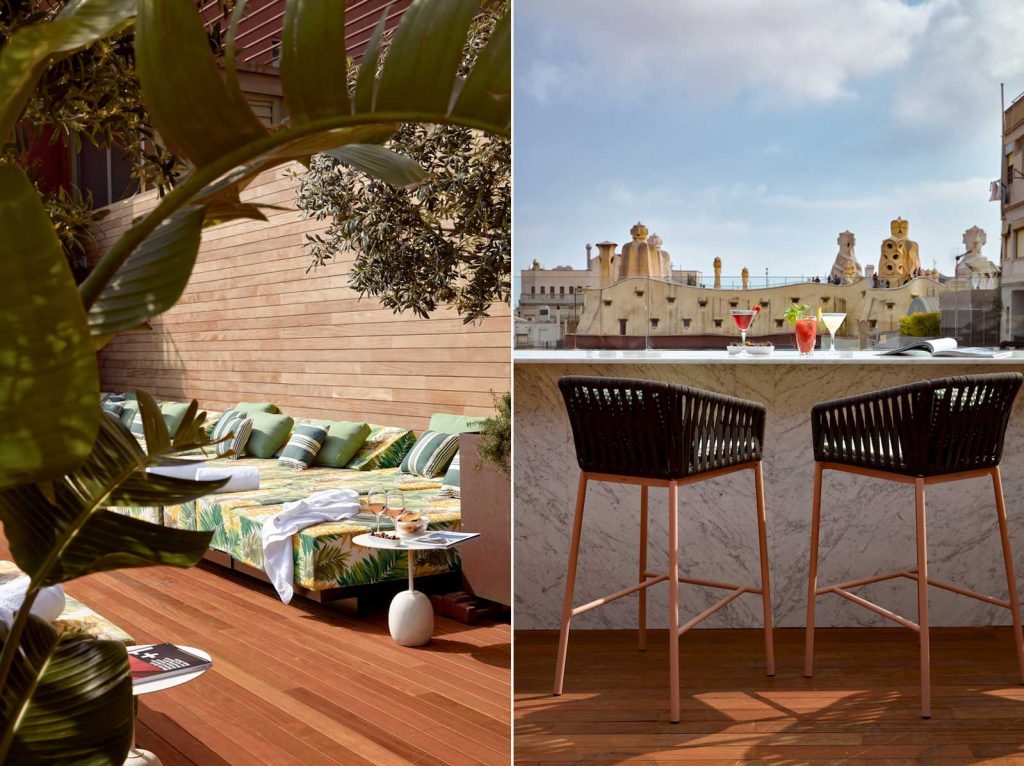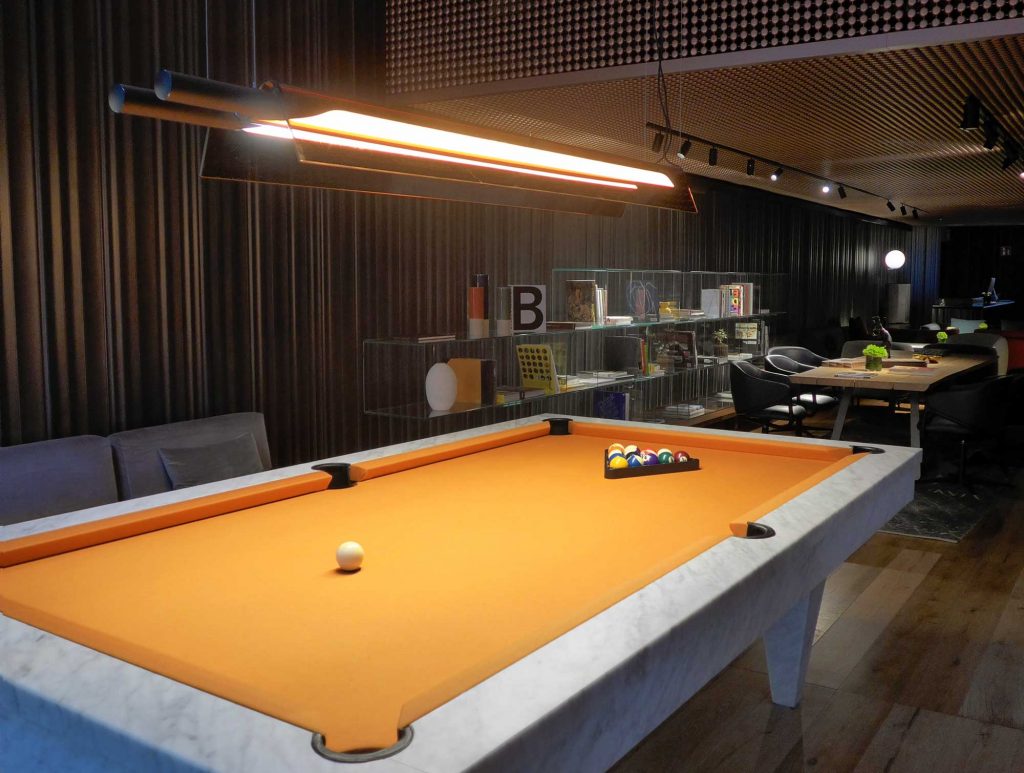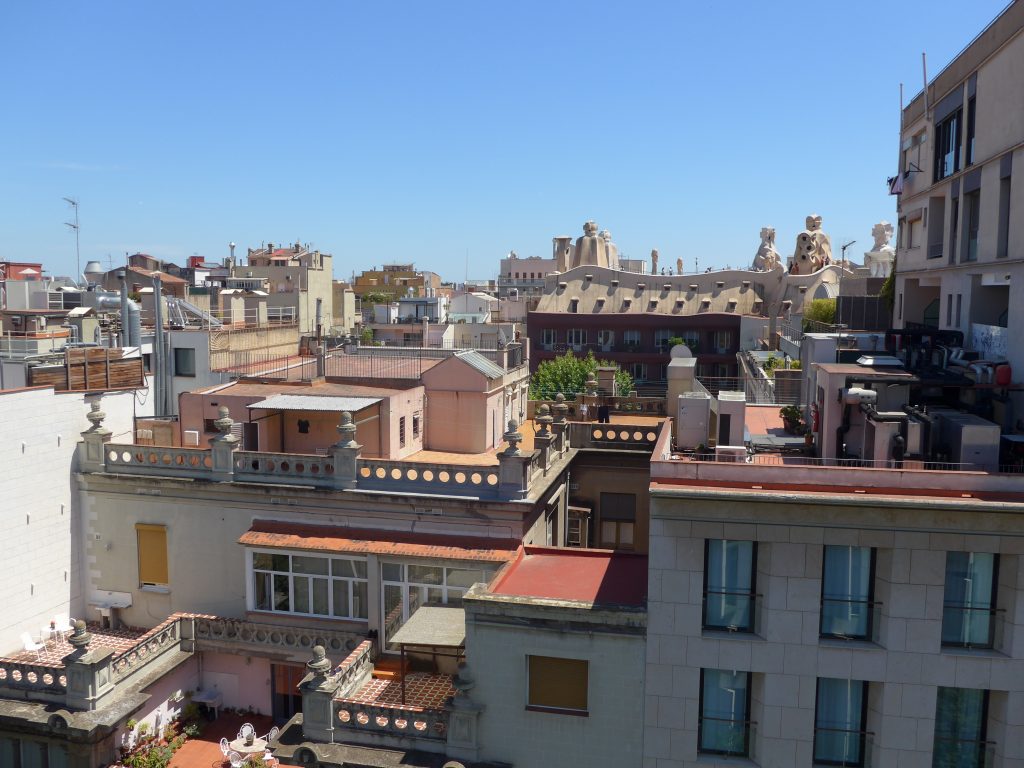Gloriously Designed Sir Victor Hotel, Barcelona
Thoughtful and sophisticated, this 91-room property offers much more than a rooftop pool

In the Eixample neighborhood of Barcelona, those who take the elevator to the terrace of Sir Victor hotel are rewarded beyond a rooftop pool: views of Antoni Gaudi’s undulating Casa Milà and its stairwell covers, chimneys, and ventilation towers disguised as surrealist totems. And if you crane your neck, glimpses of Casa Terrades (nicknamed the House of Spikes) and the never-ending construction of La Sagrada Familia. Being bookended by these Modernista landmarks helps anchor the oftentimes fleeting feeling one gets while traveling: we’re actually here, in Catalonia—and there’s much to see and learn in a short time, and this hotel makes it even more accessible.

The newest addition to the Amsterdam-based Sir Hotels chain (which makes two in Amsterdam, two in Germany and two in Spain), Sir Victor took over Hotel Om, which garnered a reputation as the city’s first contemporary design hotel when it opened in 2003. Omm’s unusual street-facing façade, with curved ears conjuring the image of peeled open books (multi-functionally collecting light, allowing privacy, and creating balconies), thankfully remains untouched, though its interior has been reimagined.

The name Victor is an homage to Víctor Català, the pseudonym of Catalan writer Caterina Albert i Paradís, an “unconscious feminist” ahead of her time. Appropriately, on the mezzanine floor, is a library dedicated solely to books by women and books about women, including a few of Victor Català’s.

Sir Victor does a commendable job of making the compact feel spacious, considering they squeeze 91 rooms into five floors, by making the communal spaces cavernous and expansive.

Those public spaces have been dreamed up by Baranowitz + Kronenberg, who did transformative work for Sir Joan in Ibiza. That hotel—even smaller than Sir Victor—was designed to evoke the interior of a jet and its associative lifestyle. (There is a branded Sir Boat that travels between the two properties and is available for guests to rent by the day.)
The lobby’s furniture—featuring the likes of De La Espada, Cassina, Stellar Works, Wittmann, &Tradition—ooze understated luxury, echoing the long love affair this Barcelona neighborhood has for high-end contemporary architecture and design (evidenced by the numerous design stores within walking distance).

But the piece de resistance is definitely the orange-felted pool table custom made from a single block of marble. That was a specific request from owner Liran Wizman, an Israeli hotelier now based in Amsterdam. “The ground floor was completely re-done and re-designed by our longterm collaborators Baranowitz + Kronenberg,” Wizman tells CH. “Locally inspired design was very important and B+K did a great job with that. The building’s interiors feature a contrast of light-filled spaces inspired by the Mediterranean sea and darker, intriguing areas which emulate the region’s spectacular, earthy interior.” The tunnel-like guest room hallways especially rouse that mood, as they’ve been painted and carpeted orange with dim lighting.

Sir Victor’s location, overall, is one of its strongest suits. In stark difference to the medieval alleyways of Barcelona’s old quarters, the gridded Eixample neighborhood (which translates to “extension” or “expansion”) shows off careful urban planning by utopian idealist Ildefons Cerdà. The chamfered corners at the intersections are unique to Barcelona, as the shaved turns help the flow of automobile traffic, though requiring a bit of a detour for pedestrians. Eixample has grown prosperous and expensive and is a wonderful place to soak up the Catalan take on Art Nouveau. It’s impossible to walk around without bumping into a Gaudi or Gaudi-influenced building or even park bench.

A “Buildings That Speak” tour, organized and vetted by the hotel through its Sir Explore program, points out some historic and spectacular architectural styles and motifs—many of which we had walked by multiple times without even noticing—and taught us that anything can become a door if you look hard enough. It’s a much-needed reminder to not just take photos, but to really look around—all in between sips of vermouth.











